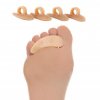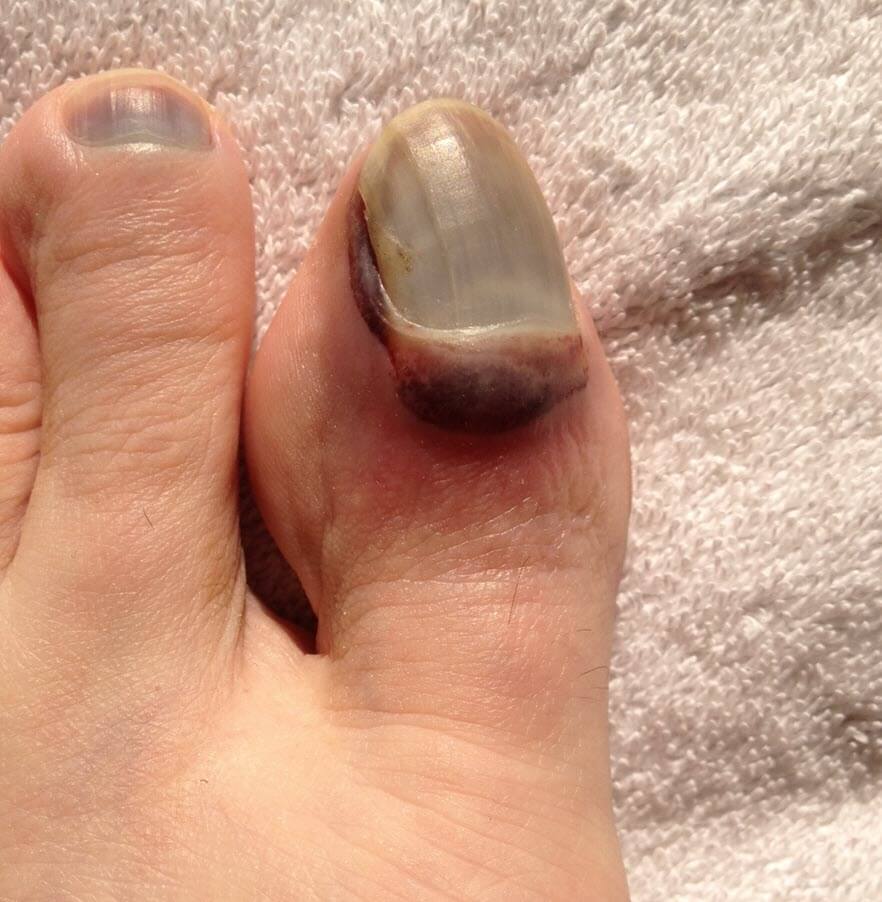BROWNCOUNTYBOB
Active Member
- Time of past OR future Camino
- Camino Frances: 2015, 2017, 2019, 2021
My wife and I have walked three Camino Frances - the full 800 kms, each time Sept - Oct in 2015, 2017 and 2019. We've decided to walk again in 2020 to avoid the Jubilee Year crowds in 2021. The first time we walked CF (Napoleon route), I noticed that my right foot "big toe" had darkened under the nail, which I later learned was "black toe", caused by my toe jamming up against the shoe box during brutal downhill climbs. This was no surprise to me, since we took the forest route down to Roncesvalles. I subsequently lost the toe nail. It was painless and grew back.
During our second camino, we decided to walk the Valcarlos route. I wore the same high top Patagonia boots. Same outcome. Black toe on right foot big toe.
For our third camino, I was determined to study up on how to prevent black toe. My brother, who is a doctor and hiked with us and his wife on our 2017 camino, bought me "Fixing your Feet" book, which I read cover to cover. I learned the importance of trimming your nails, etc. I even went to have a pedicure (first one in my life!) a week before our third camino. I bought a pair of Merrell Moab high top hiking shoes and broke these in before the camino. My wife and I walked the Valcarlos route again. I wore two pairs of socks (liners and merino wool), and wrapped my big toes in lambs wool and paper tape. And each camino we've used trekking poles and walked slowly during steep downhill climbs.
Guess what? Got black toe again - this time even worse. Within a few days, it was clear I had black toe on both big toe nails. One developed a severe blister at the bottom of the nail and I started taking an antibiotic since it looked nasty and I was afraid it would become infected (it did not). Mid-way through our camino, I noticed that the nails on the adjacent toes (next to big toe) on both feet had become dark. Now that I'm home, two nails have come off, and two others I'll lose soon.
My wife has not had black toe problems on any of our three caminos. If anyone has suggestions regarding how to reduce chances of developing black toe, I would love any and all advice. Otherwise, I'll counsel myself that black toe is my own genetic deficiency and an inevitable but painless casualty of walking the camino.
Gracias ! Bob
During our second camino, we decided to walk the Valcarlos route. I wore the same high top Patagonia boots. Same outcome. Black toe on right foot big toe.
For our third camino, I was determined to study up on how to prevent black toe. My brother, who is a doctor and hiked with us and his wife on our 2017 camino, bought me "Fixing your Feet" book, which I read cover to cover. I learned the importance of trimming your nails, etc. I even went to have a pedicure (first one in my life!) a week before our third camino. I bought a pair of Merrell Moab high top hiking shoes and broke these in before the camino. My wife and I walked the Valcarlos route again. I wore two pairs of socks (liners and merino wool), and wrapped my big toes in lambs wool and paper tape. And each camino we've used trekking poles and walked slowly during steep downhill climbs.
Guess what? Got black toe again - this time even worse. Within a few days, it was clear I had black toe on both big toe nails. One developed a severe blister at the bottom of the nail and I started taking an antibiotic since it looked nasty and I was afraid it would become infected (it did not). Mid-way through our camino, I noticed that the nails on the adjacent toes (next to big toe) on both feet had become dark. Now that I'm home, two nails have come off, and two others I'll lose soon.
My wife has not had black toe problems on any of our three caminos. If anyone has suggestions regarding how to reduce chances of developing black toe, I would love any and all advice. Otherwise, I'll counsel myself that black toe is my own genetic deficiency and an inevitable but painless casualty of walking the camino.
Gracias ! Bob





























